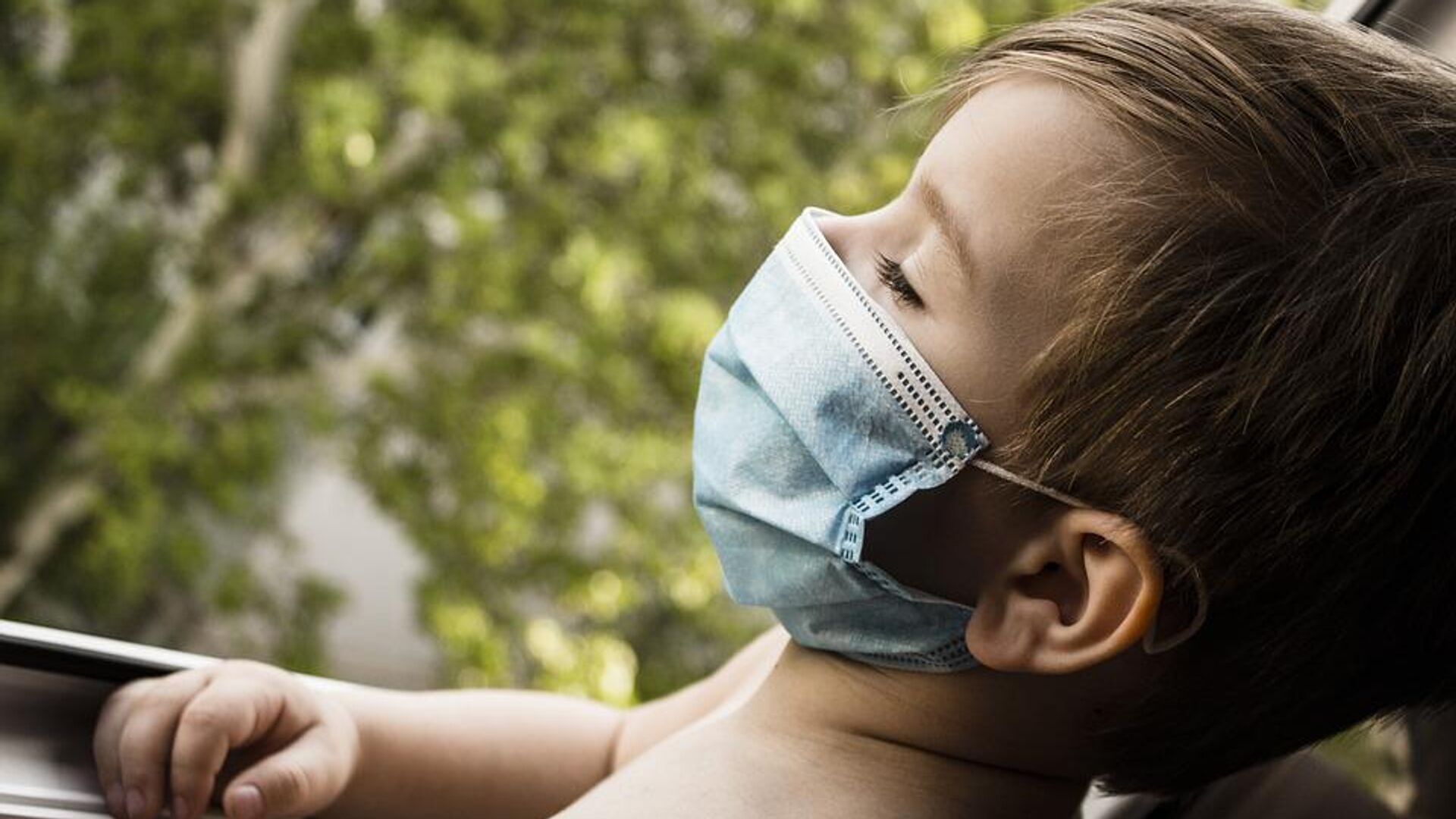https://sputnikglobe.com/20220505/study-more-than-2-out-of-3-kids-in-us-caught-covid-1095294733.html
Study: More Than 2 Out of 3 Kids in US Caught COVID
Study: More Than 2 Out of 3 Kids in US Caught COVID
Sputnik International
Since the start of the pandemic, children have luckily been spared from the worst of the coronavirus, having much lower hospitalization and death rates than... 05.05.2022, Sputnik International
2022-05-05T19:55+0000
2022-05-05T19:55+0000
2022-05-05T19:55+0000
us
covid-19
coronavirus
children
https://cdn1.img.sputnikglobe.com/img/07e6/05/05/1095294708_0:50:960:590_1920x0_80_0_0_da59b1105e124f8a7dc707e42059787f.jpg
A new study suggests that more than two out of three children ages 1 to 4 have contracted the coronavirus at some point.The study looked at blood samples of 86,000 kids under the age of 18, including 6,100 children under the age of five, and found that 68% of the samples had a specific protein that the coronavirus has but the COVID-19 vaccine does not.The rates are consistent with a rise in hospitalization and confirmed cases, though at a much higher prevalence than testing would suggest. That is because many children infected with the virus are asymptomatic or have mild symptoms and are less likely to be tested. Reported cases only show a 17% infection level in children under the age of 18.The numbers make sense, because while Omicron had a much lower percentage of cases in children admitted to the hospital than the Delta wave, hospitalizations and ICU rates due to the virus for children were much higher overall. The number of children admitted to the hospital increased over 5 times, while intensive care admissions were 3.5 times higher than the Delta wave. That suggests that despite lower death and severe infection percentages, the number of cases was so high that it still led to an increase in hospitalizations.The study has not yet been peer-reviewed, and Shabir Mahdi, a vaccinologist from the University of Witwatersrand, South Africa, says that it may still be underestimating the number of infections during the Omicron wave. He points out that antibody tests cannot determine if someone was infected more than once and they can miss infections where the antibodies have faded over time.While most kids are asymptomatic or only have mild symptoms related to COVID-19, the possible long-term effects are still unknown.The undercalculation is not limited to children or asymptomatic cases either. A recent study by the World Health Organization estimates that the world death toll from coronavirus is more than double than official numbers. They estimate between 13.3 million and 16.6 million people have died as a result of the pandemic.
Sputnik International
feedback@sputniknews.com
+74956456601
MIA „Rosiya Segodnya“
2022
News
en_EN
Sputnik International
feedback@sputniknews.com
+74956456601
MIA „Rosiya Segodnya“
Sputnik International
feedback@sputniknews.com
+74956456601
MIA „Rosiya Segodnya“
us, covid-19, coronavirus, children
us, covid-19, coronavirus, children
Study: More Than 2 Out of 3 Kids in US Caught COVID
Since the start of the pandemic, children have luckily been spared from the worst of the coronavirus, having much lower hospitalization and death rates than adults. Still, cases among сhildren surged during the Omicron wave and a new study provides insight on how prevalent it is.
A
new study suggests that more than two out of three children ages 1 to 4 have contracted the coronavirus at some point.
The study looked at blood samples of 86,000 kids under the age of 18, including 6,100 children under the age of five, and found that 68% of the samples had a specific protein that the coronavirus has but the COVID-19 vaccine does not.
The rates are consistent with a rise in hospitalization and confirmed cases, though at a much higher prevalence than testing would suggest. That is because many children infected with the virus are asymptomatic or have mild symptoms and are less likely to be tested. Reported cases only show a 17% infection level in children under the age of 18.
But antibody tests paint a different picture. While children one to four have the greatest increase in infections, rising from 33% to 68% from December 2021 to February 2022, ages 5 - 11 and 12 - 17 have a higher rate of infection overall, sitting at 77% and 74% respectively.
The numbers make sense, because while Omicron had a much lower percentage of cases in children admitted to the hospital than the Delta wave, hospitalizations and ICU rates due to the virus for children were much higher overall. The number of children admitted to the hospital increased over 5 times, while intensive care admissions were 3.5 times higher than the Delta wave. That suggests that despite lower death and severe infection percentages, the number of cases was so high that it still led to an increase in hospitalizations.
The study has not yet been peer-reviewed, and Shabir Mahdi, a vaccinologist from the University of Witwatersrand, South Africa, says that it may still be underestimating the number of infections during the Omicron wave. He points out that antibody tests cannot determine if someone was infected more than once and they can miss infections where the antibodies have faded over time.
While most kids are asymptomatic or only have mild symptoms related to COVID-19, the possible long-term effects are still unknown.
The undercalculation is not limited to children or asymptomatic cases either. A recent study by the World Health Organization estimates that the world death toll from coronavirus
is more than double than official numbers. They estimate between 13.3 million and 16.6 million people have died as a result of the pandemic.



